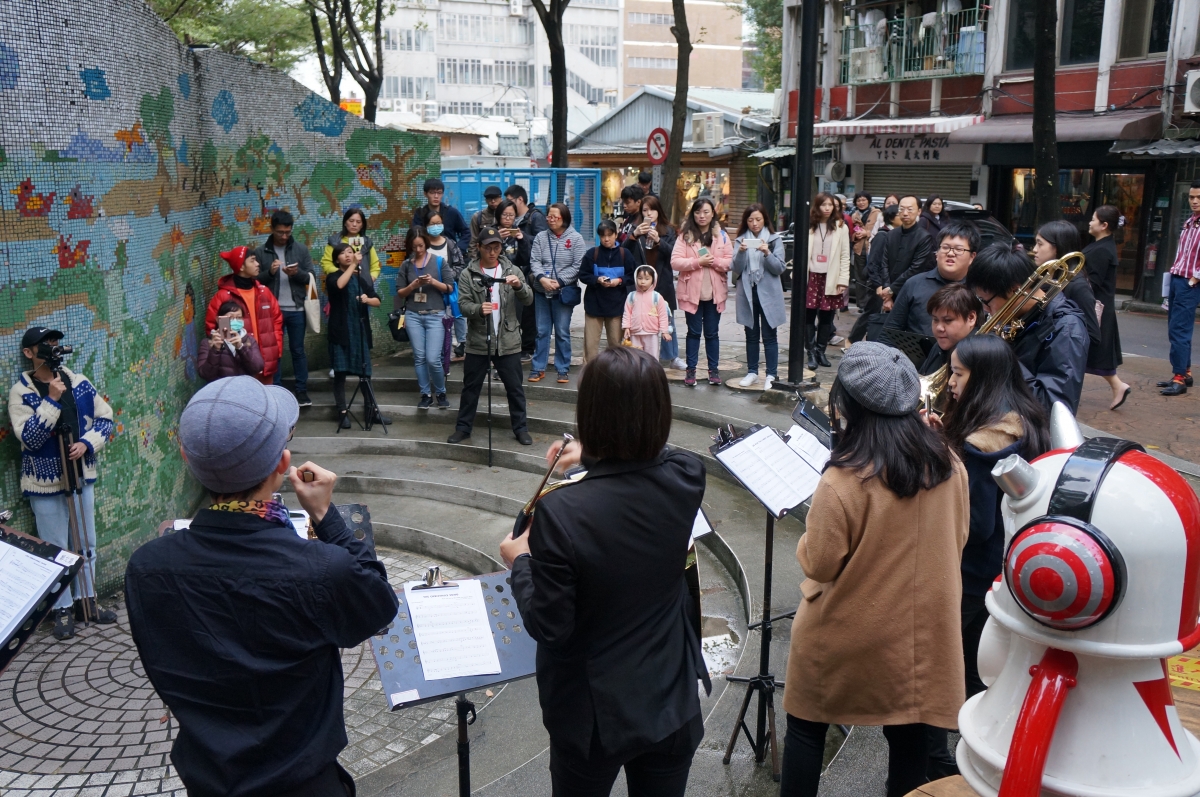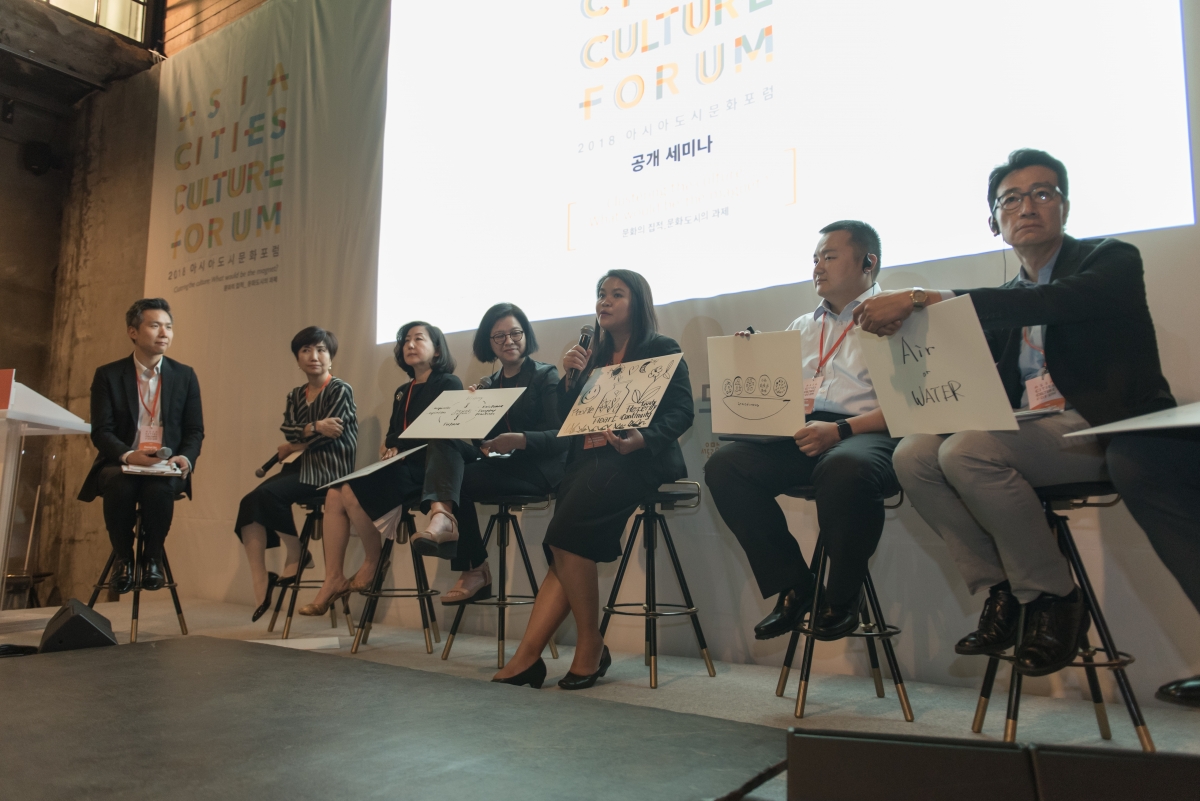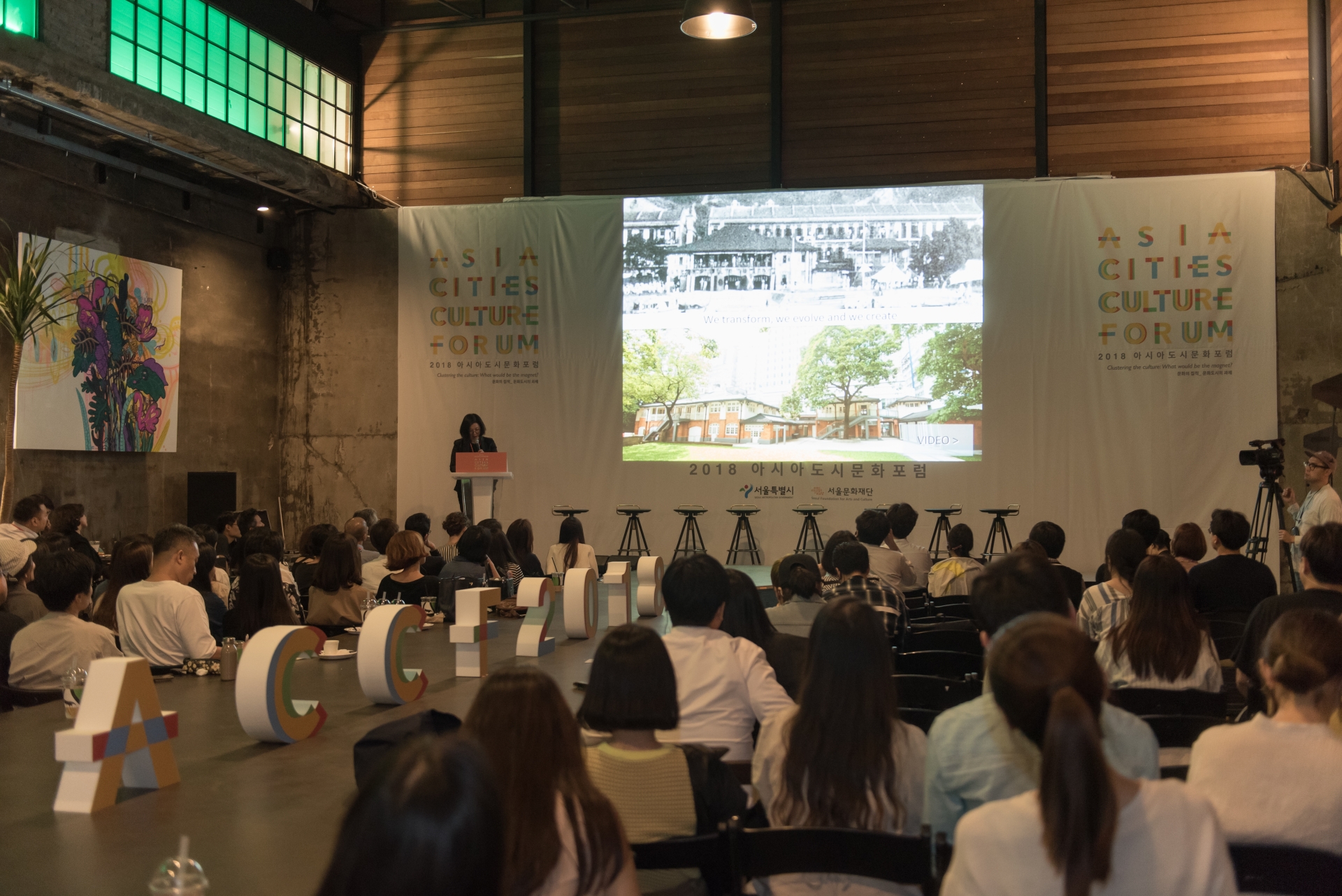Culture Clusters in Taipei
Datong District, Taipei is the oldest residential area in Taiwan and has a rich architecture heritage dating back to the final years of the Qing dynasty and the Japanese occupation. Although Datong District was known for the robust trade of goods via the Tamsui River, and had flourished as a commercial hub in the 1900s, the city gradually lost its radiance as it expanded and its industries relocated.
Taipei City Government set out to foster Datong District as a culture cluster and to revitalize the region because it has ample appealing elements, such as modern cultural heritage sites that have weathered the pressures of redevelopment, urban structure, and the cultivation of unique riverside space charm. Museum of Contemporary Art, Taipei (MOCA Taipei) was established as the nodal hub of the culture cluster and a detailed execution strategy was developed. First, the public facilities surrounding MOCA Taipei were transformed into art and culture spaces. Art exhibitions and various performances take place in the linear park formed along the subway route. Pop-up stores are set up on the underground pedestrian way that connect to the subway station and one corner of the path has been dedicated to street dancers to freely practice, thereby targeting the influx of a new young population in their 20s and 30s.
Taipei City Government also invested in the intangibles as much as on refining the tangibles. Since 2012, Taipei invited artists to work with school teachers on a joint education programme while stimulating regional community vitalization by hosting local festivals and art events. Jiang Meng Fang (subdivision chief, Taipei City Government) presented these efforts in his presentation ‘Clustering the Culture: Arts and Film in Taipei’, stating ‘through various means, including cooperation between artists and local residents, and hosting art events, we were able to successfully establish artistic identity in the old city centre of Taipei and to form a cultural community’.
Lifestyle and Urban Space
Such regional art and cultural invigoration projects are taking place in numerous places throughout the world. Some are based on local activities and others are involved in active government initiatives, but overall, the ‘success stories’ have something in common that can be outlined as the following: cities that have declined despite their rich cultural resources, the government’s expansion of facilities, artist activities, and hosting large-scale art and cultural events.
However, Lucy Minyo (consultant, BOP Consulting), who studied culture clustering in various cities and worked on urban consulting, pointed out that is not entirely the case: ‘Culture and creativity could be a catalyst for the culture clustering process, but because there are regional differences and many stakeholders, it is difficult to identify certain elements as the success factors’. One common factor between all of these successful cases is that there are people who seek pleasure in art and culture.
Han Junghee’s (managing director, Daelim Museum) presentation ‘Changes of Urban Space through Cultural Planning upon Transformative Lifestyle’ reveals the specific number in this group of people. According to Han, Daelim Museum did not enjoy its popularity back in 2002 as today. After many attempts trained on the goal of an ‘art gallery together with the public’, the museum hosted fashion designer Paul Smith’s collection exhibition ‘Inside Paul Smith’, which was well received, and began to focus on the contact point between daily life and art. The museum adjusted its motto to ‘an art museum that makes everyday life into art’ and presented lifestyle related exhibits. As a result, Daelim Museum saw a surge in visitors. The number of annual visitors rose from 13,000 in 2008, 247,000 in 2012, to roughly 400,000 in 2014. Han Junghee explained that ‘analysing the visitor data, 77% of them were women, and in terms of age group, 84% were people in their 20s–30s’, adding that ‘this increase in visitors reflects the interests and desires of people in their 20s–30s on lifestyle, art and culture’. She commented ‘of the analysed visitors, about 40% were firsttime visitors to Daelim Museum, and based on comprehensive analysis of the floating population around Gyeongbokgung Station and number of searches on social media, it can be deduced that people visit Daelim Museum with the purpose of also touring the culturally rich Seochon area’.
Seochon is place full of historic and cultural traces, and has acted as the stage for artists since the Joseon Dynasty era. The neighbourhood is full of unique cultural elements such as artist workshops, old bakeries, and Tongin Market. Such locational characteristics were coupled with Daelim Museum’s planning that captured public demands, and so more people were drawn to Seochon.
Some interpret culture clustering from the perspective of consumption. Mo Jongryn (professor, Yonsei University) stated in his keynote lecture, ‘Seoul, a Lifestyle City’ that ‘to the younger generation, pursuing creativity, individuality, and the special, a postmodern style city comprised of unique buildings and old streets is more appealing than a standardized cutting-edge city’ and that ‘they are drawn to local businesses consisting of small and attractive cafes, stores, and foodie-choice restaurants’. Mo Jongryn argued that ‘such trends can be confirmed by the growth rate of businesses and rising rate of rent, and business owners contribute more to the formation of a business area than culture and art’.

Performance taken place around MOCA Taipei
Community and Art on the Streets
There are some who are discomforted by how culture and art are used as media for regional regeneration or as prompts to vitalization, because it appears that art and cultural activities, that should preserve creativity, freedom, and critical thinking, have succumbed to use as tools for the government to achieve its objectives under the name of regional regeneration. Moreover, areas that have regained a certain liveliness have experienced gentrification and have consequently pushed out struggling artists.
Ivy Lin (curator, Oi!) suggested a different angle when looking at culture and art through her case presentation, ‘Where Art Goes Local: Places as the Fields of Artistic Practice in Hong Kong’. Ivy Lin addressed the potential that art and culture have as necessary programmes for urban space today. ‘By disrupting the conventional notion of society, contemporary art provides the resources and stimulus to discuss and debate public issues. Not only can the public participate in art work, but also through the process, people become interconnected.’
Art space Oi! which Ivy Lin presented on, located in Hong Kong, introduced curatorship as a new method of producing exhibitions. Traditional curation involves a curator, either belonging to an organisation such as a museum or as a freelancer, working with experts to decide on the theme and select pieces. However, Oi! invites the local residents to freely input their ideas, produce an exhibition alongside curators and artists, and even participate in the making of art works. In other words, Oi! performs a community centred curation. For instance, ‘XCHANGE : Social Gastronomy’ was an ‘open kitchen’ project on cooking meals with leftover food and materials from nearby markets. Taking ideas from social issues like upcycling, the project requires public participation. The participants enjoy art and culture by taking part in ‘art activity’ of cooking, and are given the opportunity to ponder over local and social issues. Ivy Lin claimed that ‘there have been other projects based on local communities’ and ‘artistic practice can be a process of communication, cooperation, and formation of a sense of belonging, and may be a way to form the narrative of a community and accumulate cultural clustering’.
Art museums like Oi! have headed out into the community instead of being confined in a ‘white box’, which could be cases for changing how art and culture are accepted. In his keynote lecture ‘Culture, Conspiracy and Questions’, Seo Hyun (professor, Hanyang University) stated ‘culture, which has been preserved as an object of enjoying the past, is discriminative based on value, and was an art that had a high threshold to pass through education’. He added that ‘those that are referred to as popular culture and sub-culture have grown to gain more influence industrially and socially, and changed the meaning and concept of culture’. He added that ‘in the end, culture is a way of life and a social tool for presenting identity. In this age, where culture should be openly accessible to all in public spaces, a cultural space would not be built as an opera house or art gallery’.
The Role of the Government as the City Administrator
Changes in environment require urban designers and policy implementers to prepare a more thorough strategy. Unlike in the past, when villages and cities were formed on empty plots of land, urban planners and urban policy experts now face areas with myriad stakeholders. Additionally, with the increased interest on lifestyle, art and culture, which are almost inseparable from it, have become as important as the economy, and forming a unique regional identity has climbed up the priority list in policy making. The views shared by the presenters regarding the role of the government as the administrator of urban space, during the discussion session of the open policy seminar, incorporated such perceptions of reality. Lucy Minyo stated that ‘in areas with weak social interaction spaces, like Medellin, Colombia, the government’s role in building cultural facilities or expanding transportation infrastructure is important’ and that ‘instead of having the government take the initiative and become constantly involved, involvement should be reduced to promote the community’s participation so that the local community can grow as they freely utilize cultural facilities and spaces according to their purpose’.
Gentrification, which is accompanied by culture clustering, was also a hot topic. It was also mentioned that in case the government takes charge of revitalizing a certain area, there need to be supporting policies put in place that will prevent any side effects from the early stages of planning. Johan JaeHyong Heo (CEO, Root Impact) commented that ‘in the case of Seongsudong Social Venture Valley, the foundations to alleviate gentrification were laid early on when the new social venture related community was formed in Seongsu-dong’ and ‘thanks to Seongdong-gu District Office’s efforts, the pace of change is not as substantial as it is in other parts of Seoul’.
Seongdong-gu has actually worked on regional stability by establishing a consultation body with the local residents, concluding an agreement among building owners, tenants, and Seongdonggu for mutual cooperation, setting up ordinance to prevent gentrification. To stabilise rent and protect small business owners, Seongdonggu purchased a building in Seongsu-dong and established the Seongdong Safe Arcade. Han Junghee stated that ‘Seochon also saw this issue surface as Daelim Museum became popular. Our solution was not that different’ and ‘in order to preserve the area’s uniqueness the government needs to act as the mediator between the users, such as residents, business owners, and artists who reside in the area, and building owners who seek to maximize profit’.
Thre were also arguments that for city administration, new institutions that suited the current situation need to be established other than the currently implemented purpose plan and district unit plan. Park Eunsil (professor, Chugye University for the Arts) claimed ‘we need cultural planning that will address local culture resources and cultural demands from a comprehensive viewpoint’ and ‘there have to be discussions on not just the work spaces for the creatives who spearhead culture clustering, but also on their living space’.

Open policy seminar of 2018 ACCF





